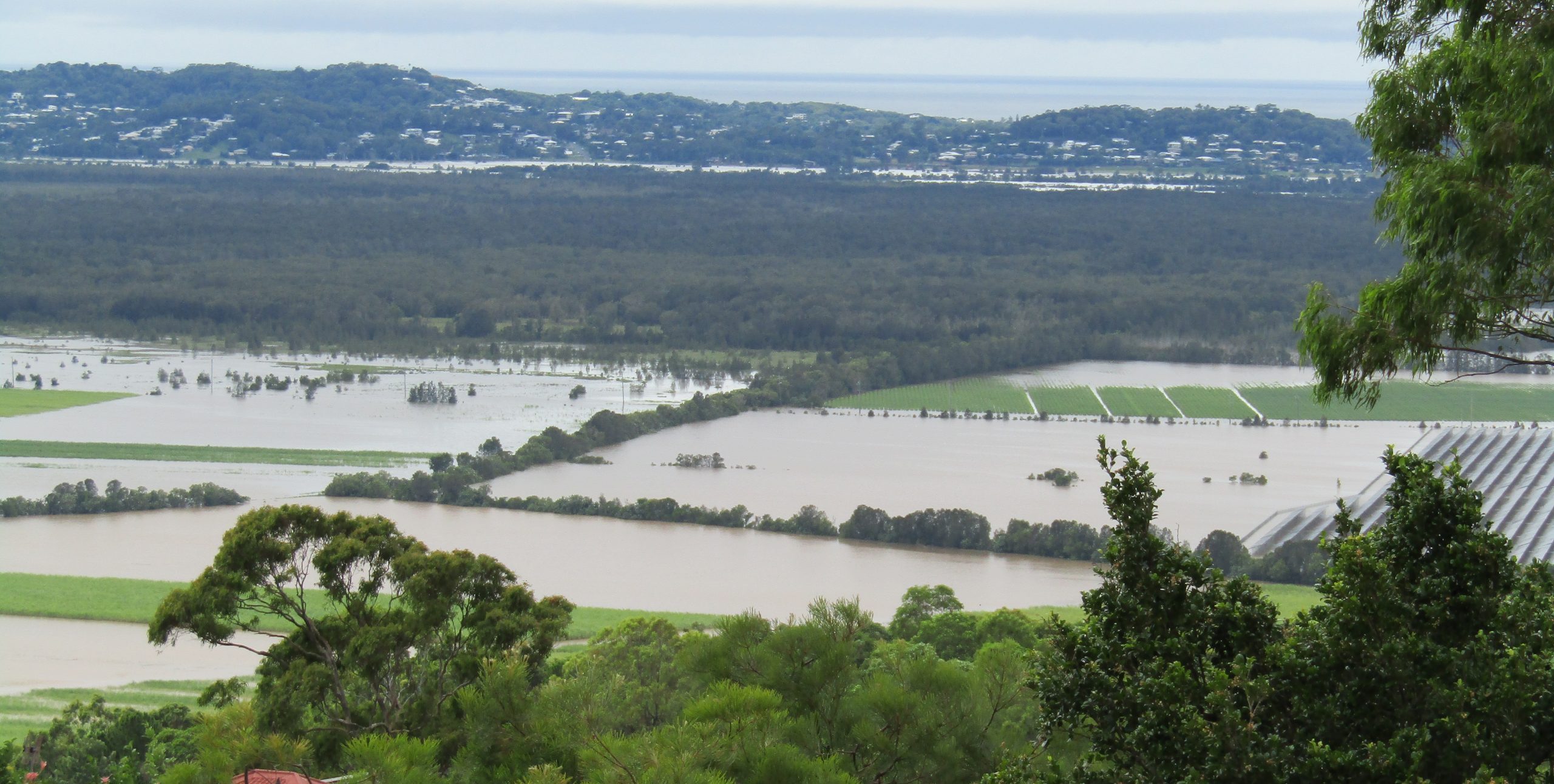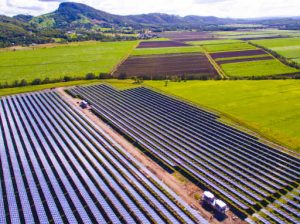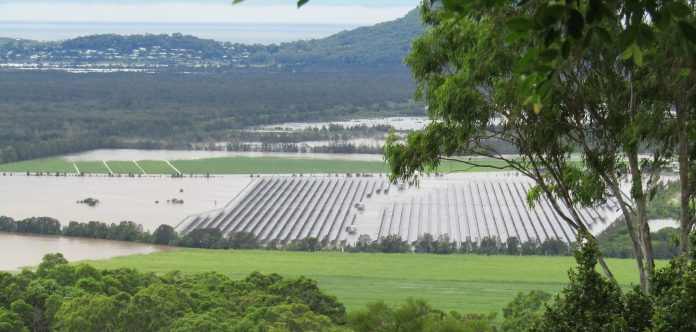Sunshine Coast Council has defended the location of its solar farm after the $50.4 million facility was inundated with floodwaters, despite being built above the 1-in-100-year flood level.
The Valdora farm was taken offline for 11 days after rising waters from extreme rainfall lapped the rows of solar panels during recent wild weather.
The 15MW facility, which offsets council’s entire electricity needs plus more, was shut down and not producing power between February 26 and March 9.
Two of the six power conversion units were reconnected on Wednesday after an inspection found no crucial infrastructure for operational performance was impacted.
The rain event that dumped masses of water over South-East Queensland and NSW has been labelled “one of the most extreme disasters in Australian history” caused by “a climate system on steroids”.
“The frequency of these events is likely to almost double with each degree of further global warming,” warned a new report by the Climate Council released on Thursday.
Sunshine Coast resident Graham Tigell took photos of the site after the peak had subsided, showing significant water still pooled around the panels.

A spokesperson for Sunshine Coast Council said key components of the farm, including electrical equipment, solar panels, inverters and switchboards, were situated well above the 1:100 flood level of 4.2m.
They were also above the highest flood levels ever recorded in the area, of 3.4m in 1992.
“As a precautionary measure, the solar farm was disconnected from Energex grid on February 26 to enable a full inspection of the site to be carried out,” said the spokesperson.
“Once flood levels subsided and a full inspection was carried out, two of the six power conversion units at the solar farm were reconnected to the grid on March 9.
“The remaining four units will be reconnected over the coming days.”
The spokesperson said prior to building the 24-hectare solar farm, a “comprehensive flood study” had been undertaken by an industry consultancy and council, and construction was tailored to the cane land site.

The Sunshine Coast Council was the first local government in Australia to build its own solar farm to offset 100 per cent of its electricity needs while also generating an income with the excess.
The farm covers the electricity requirements of administration buildings, aquatic centres, community and performance venues, holiday parks, libraries, art galleries and sporting facilities.
It’s estimated to provide savings to ratepayers of $22 million over its 30-year life.
The location on a disused cane farm at Valdora was chosen based on key criteria relating to its proximity to a 33kv Energex line.
The land was flat and large enough to develop a scale of solar farm that could generate enough to match council’s annual power needs.
The site also had to have “optimum solar perspective” to capture the most sun.
In its first year of operation, the solar farm won eight awards and the council spokesperson said it continued to provide savings to council and reduce council’s operating costs.
“It delivers benefits to our environment, offsetting more than 100% of council’s electricity consumption, demonstrating Sunshine Coast Council’s commitment to be Australia’s most sustainable region,” he said.
Help keep independent and fair Sunshine Coast news coming by subscribing to our free daily news feed. All it requires is your name and email. See SUBSCRIBE at the top of this article





